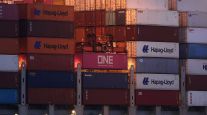International E-Commerce Will Triple to $900 Billion by 2020, Report Predicts

This story appears in the Feb. 20 print edition of Transport Topics.
The total value of online purchases from international retailers is expected to triple to $900 billion by 2020 and result in new opportunities, and challenges, for transportation, logistics and warehousing companies, according to several reports out this month.
The proportion of Americans doing their nonfood shopping online will rise to about 42% in three years, about 5 percentage points higher than now. In Great Britain, nearly 50% will do nonfood shopping online, up about 10 percentage points, according to a report from commercial realtor CBRE Group Inc.
Cathy Morrow Roberson, head analyst at market-research firm Logistics Trends & Insights, said that international e-commerce creates new tasks for third-party logistics firms.
“They manage currency exchanges and conversions and will also take care of import or export taxes and clearing customs for the international e-retailer,” she said.
Citi Research, citing a report from PayPal Holdings Inc., said $12.5 billion was spent in 2013 (the most recent data compiled by the group) on cross-border fashion items, followed by health and beauty products ($7.6 billion), electronics ($6 billion), computer hardware ($6 billion) and jewelry, gems and watches ($5.8 billion). In a separate report, DHL Express wrote that 31% of Americans bought a fashion item online from a foreign retailer, followed by media (22%), computer electronics (16%), toys (15%), beauty products (14%) and home furnishings or furniture (11%).
Brian Bourke, Seko Logistics vice president of marketing, said it’s important for international e-retailers to have websites in multiple languages. Another logistical hurdle is updating prices and taxes based on the daily shifts in the currency exchange rates. The Itasca, Illinois-based third-party logistics company has 120 offices in 40 countries.
“Perhaps the handbag or ornamental rug you want to purchase is $295, but that may translate to $301.22 and that doesn’t feel right because we’re not used to it. However, if the item were $299, the customer would think it fits,” Bourke said. “It’s not just currency conversion, but it’s also cultural conversions.”
He also said that while most cross-border items are parcels, freight e-commerce is growing. For example, a Lamborghini owner might need parts from a European manufacturer.
“It’ll be cheaper to buy it yourself. So we’d fly it from Rome or London to New York, then we would tender the freight to our trucks or a third-party less-than-truckload carrier,” Bourke said. “E-commerce is absolutely causing a disruption in trucking, so much so that space and dimensions are becoming more important than weight.”
Citi Research and PayPal found that 84% of Chinese making an international order did so from a U.S. company. In fact, the Chinese have their own word for buying overseas: Haitao.
The boon in domestic and cross-border e-commerce has caused a spike in massive warehouses of more than 1 million square feet. Philadelphia, Dallas-Fort Worth, Atlanta, Chicago and Inland Empire, California, have nine or more such facilities, according CBRE.
“We’re running out of space. It’s a huge problem. We have a massive supply constraint. Our vacancy rates for warehouses in prime locations are at all-time lows. In some markets, it’s 0%,” said David Egan, CBRE head of industrial and logistics research for the Americas.
For trucking, domestic and cross-border e-commerce continue to create a large niche for final-mile less-than-truckload carriers. Roberson said cross-border e-commerce also benefits truckload carriers providing longhaul service.
“Whether it’s a washer and dryer bought domestically or something bought from another country, there are a number of new companies popping up offering white-glove service,” Roberson said. “Estes Express Lines has set up a [white glove] unit. J.B. Hunt has an e-commerce fulfillment division for home deliveries.”
However, some believe that international trade will slow down during the Trump administration. Others believe it will continue an exponential climb.
“Renegotiating the trade deals will add some friction to the process of buying a handbag from Italy,” said Noël Perry, an economist at consultancy group FTR. “Also, the automation of manufacturing is eliminating labor cost advantages from overseas, and it’s also eliminating knowledge advantages that cause me, for instance, to buy a Japanese camera or a German car.”
But Bourke believes the international e-commerce market is ripe for more growth because people appreciate having easy access to inventory around the world.
“Any action by the current administration wouldn’t decrease cross-border e-commerce. It might slow its growth but not dramatically,” he said. “Cross-border e-commerce is like a dam breaking; there’s not much you can do to quell demand because ultimately, it’s about the freedom of choice.”




